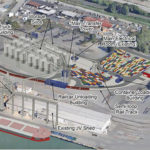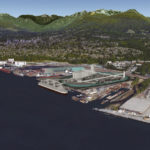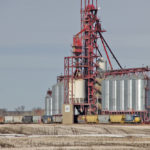
Tag Archives Grain elevator

Another grain export terminal proposed for Vancouver
The way western Canadian crop production is growing the increased capacity is needed, say some industry observers

PHOTOS: This Old Elevator: November 2016
The Manitoba Historical Society wants to gather information about all the grain elevators in Manitoba

A look at G3’s proposed new Vancouver grain terminal
A spiral track would allow trains to arrive on site, ease congestion elsewhere, and unload intact before returning to the Prairies

Grain sector hails transport reform
But some farm groups worry about the future of the maximum revenue entitlement

Scrapping maximum revenue entitlement will double farmers’ freight bill
Agricultural economist Derek Brewin concludes the MRE works for farmers and the railways and has resulted in a more efficient system

Railways say they’re ready to move grain
A late start to the shipping season, big crop and the forecast for a harsh winter are combining to challenge the railway

PHOTOS: This Old Elevator: October 2016
The Manitoba Historical Society wants to gather information about all the grain elevators in Manitoba

Wide basis cost farmers billions
The University of Manitoba’s Derek Brewin suspects grain companies got the money instead

Farmers get Garneau meeting
KAP’s Dan Mazier and other farm leaders were to get a face-to-face meeting with the transport minister October 20 in Saskatoon to discuss changes to the Canada Transportation Act

PHOTOS: This Old Elevator: September 2016
The Manitoba Historical Society wants to gather information about all the grain elevators in Manitoba


